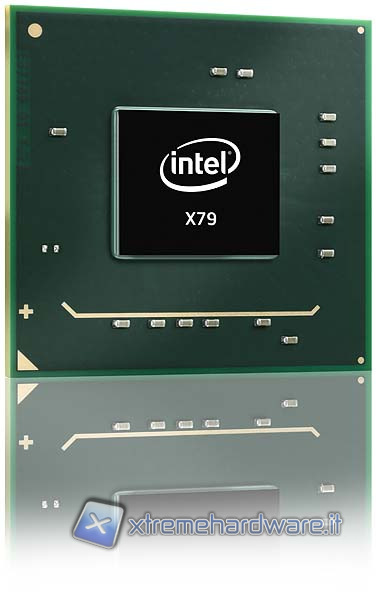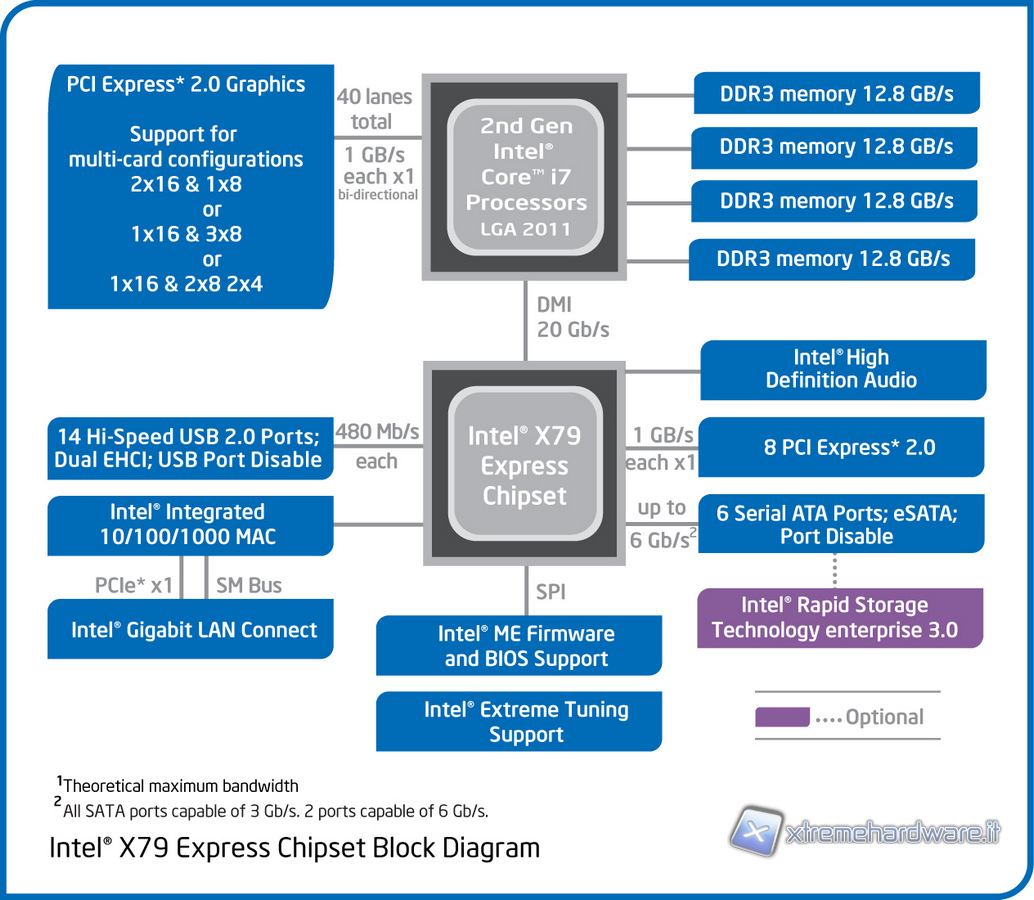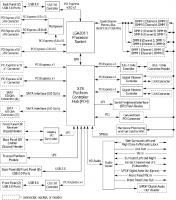LGA 2011 and x79, the features of the new Enthusiast platform
We analyze the characteristics of the new Intel platform starting from the block diagram.
The main change compared to the LGA 1366 is the shift of the PCI Express controller directly into the CPU, as in all other LGA 1156 and 1155 Intel platforms, the x79 chipset is also in this case a Platform Controller Hub (PCH) that covers the basic functions of the old south bridge.
The PCI Express lanes dedicated to graphics climb up from 32 of the X58 to over 40 of Sandy Bridge-E CPU each operating at 1GB/s. The configuration options are 2x16 +1 x8, 1x16 +3 x8, or 1x16 +2 x8 +2 x4.
With regard to the scheme we must make an immediate clarification. The PCI Express 2.0 is reported, while the support for PCI Express 3.0 seems to be confirmed both in the datasheet of Intel 3960X CPU both in the specifications of the motherboard, on the characteristics of supported processors. The same block diagram present in a preliminary version of the DX79SI motherboard reports support to the new standard, which allows to reach a total bandwidth of up to 8GT/s or 1Gb/s (as shown in figure). The block diagram is therefore correct and the PCI Express 2.0 wording probably refers to the standard supported by current graphics cards. The PCI Express 3.0 uses a new 128bit/130bit encoding scheme which greatly reduces the overhead compared to 8bit/10bit encoding of previous versions. The effective bandwidth is therefore still about double that of PCI Express 2.0 at 5GT/s operation that guaranteed only 500MB/s.
Almost all new x79 motherboards implement the new standard, which appeared some time ago in some LGA 1155 motherboards to ensure compatibility of future Ivy Bridge CPUs. Obviously, to exploit the new standard will also need a video card that implements this technology. The PCI Express 3.0 video cards will be introduced on the 28nm next generation planned for December 2011 (AMD) and February 2012 (Nvidia). The expected increase in computational power is impressive, but the bandwidth made available by a PCI Express 2.0 x16 link should still be more than sufficient to ensure no performance drop even with top of the line video cards.
The compatibility of these CPUs with PCI Express 3.0 should therefore be guaranteed, as one might expect from an enthusiast CPU designed for demanding gamers.
The CPU, as now known, has also a 4 channels memory controller, each with a bandwidth of 12.8GB/s.

The x79 chipset is connected to the CPU via a DMI bus operating at 20Gb/s, which handles SATA ports, 14 USB 2.0, High Definition Audio, a further PCI Express Link, Gigabit Ethernet, and an SPI link to the BIOS.
With respect at what might be expected (even from the earliest descriptions), the x79 chipset is definitely the most disappointing part of the platform. Still absent native support to USB 3.0 standard, although Intel was one of the first promoters. The SATA connectivity does not bring anything new compared to the LGA 1155 platform, too. Only 2 the SATA 6Gb connections and 4 the 3Gb/s SATA connections. The motherboard manufacturers will have to rely on third-party controllers for both USB 3.0 and SATA for additional ports.
Finally, we report the block diagram of the DX79SI motherboard illustrating in detail the operation of an LGA 2011.



